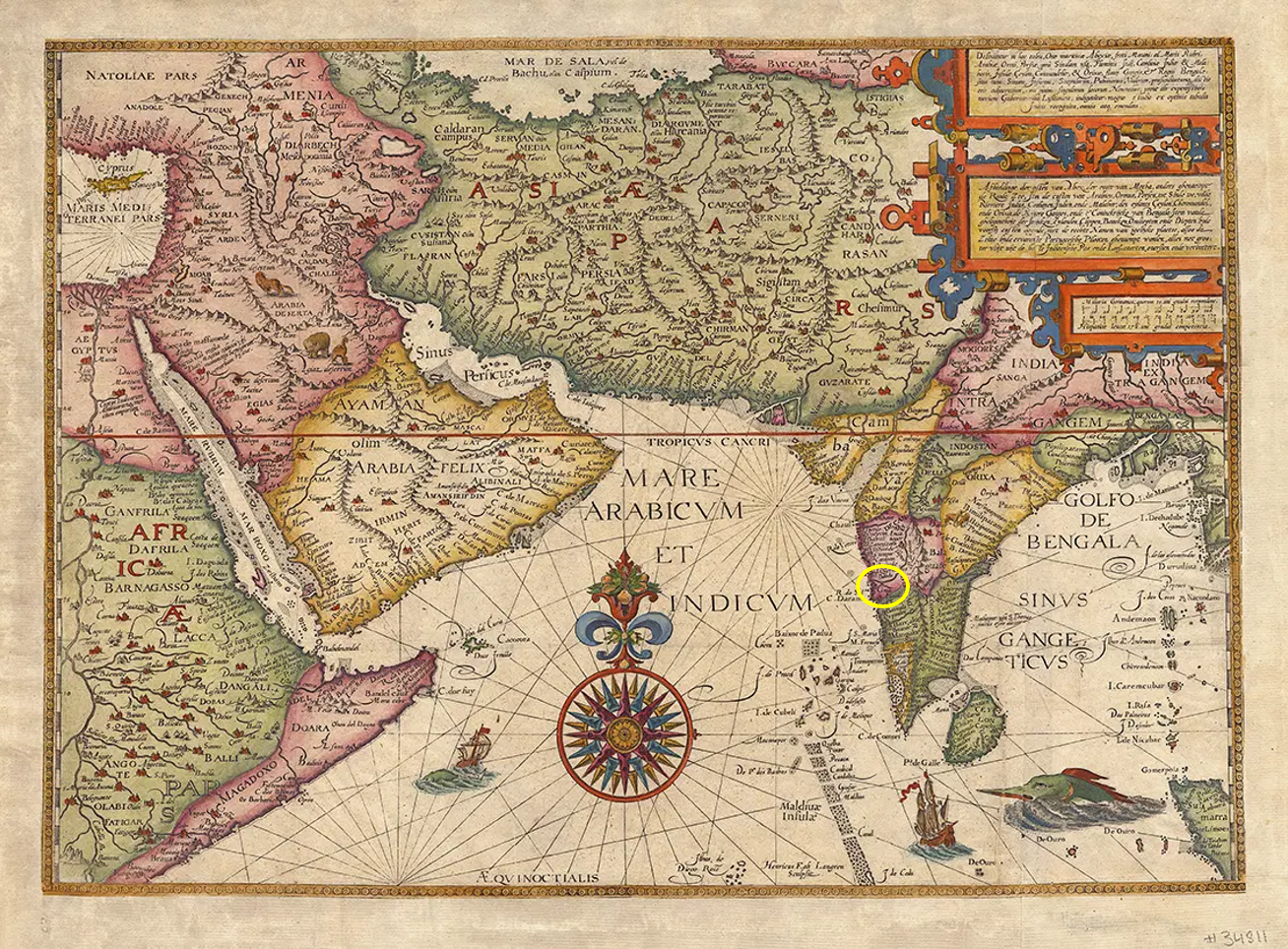
Goa, India in Van Linschoten's Antique 1596 Map (in yellow circle)
from: Thomas, Maria. "A beautiful collection of rare maps shows how the world viewed India over the centuries." Quartz India.


GOAN ‘VINDALOO’ OR ‘KARI’
The history of curry began with the European invasion of India. In 1510, the Portuguese captured the city of Goa and brought chili pepper to India. Later, chili pepper became one of curry's essential ingredients.

Goa, India in Van Linschoten's Antique 1596 Map (in yellow circle)
from: Thomas, Maria. "A beautiful collection of rare maps shows how the world viewed India over the centuries." Quartz India.

Maritime Route between Portugal and India (Goa) in the 16th Century
from: "The Portuguese India Route." Researchgate.
"I saw you green, then
Turning redder as you ripened,
Nice to look at and tasty in a dish,
But too hot if an excess is used.
Savior of the poor,
enhancer of good food,
Fiery when bitten,
Even to think of (the deity) Pānduranga Vittalā is difficult."
- From a poem about chili pepper, written by a philosopher-saint Purandaradasa (1484-1565)
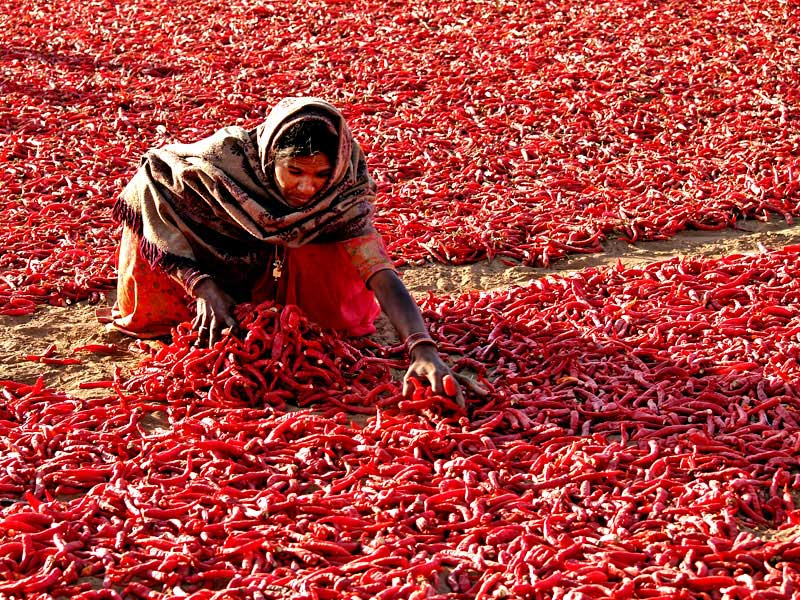
An Indian Lady Drying Chili
from: "Drying Chili." Trekearth.
Most of the permanent Portuguese population in India were Casados, viz., those married to native women in India. The women's diet in Casados' families was predominantly Indian; they preferred rice to bread and ate meals with their hands.
"The Portingales, Mestiços, and Indian Christian women in India... eat no bread or very little… but they are so used to eat rice... and so eat it with their hands: for there they eat nothing with spoons, and if they should sée any man doe so, they would laugh at him."
- From the travel writing of Dutch merchant Jan Huyghen van Linschoten (1563-1611)
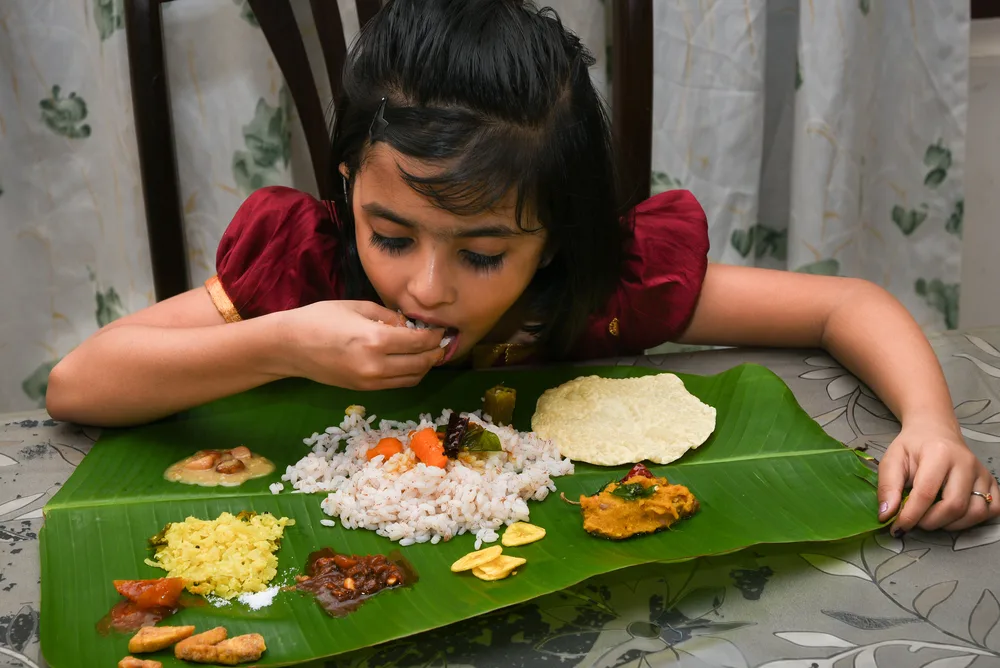
An Indian Girl Eating With Her Hands
from: Susheela. "Many Cultures in the World Think This is the Best Way to Enjoy Food – You’ll be Surprised to Find Out Its Many Benefits!"
Wego Travel Blog.
Meanwhile, the Casados maintained a taste for the Portuguese dishes so when they returned home, the women tried to use their imagination to recreate what their Portuguese husbands and fathers wanted without the original recipe.
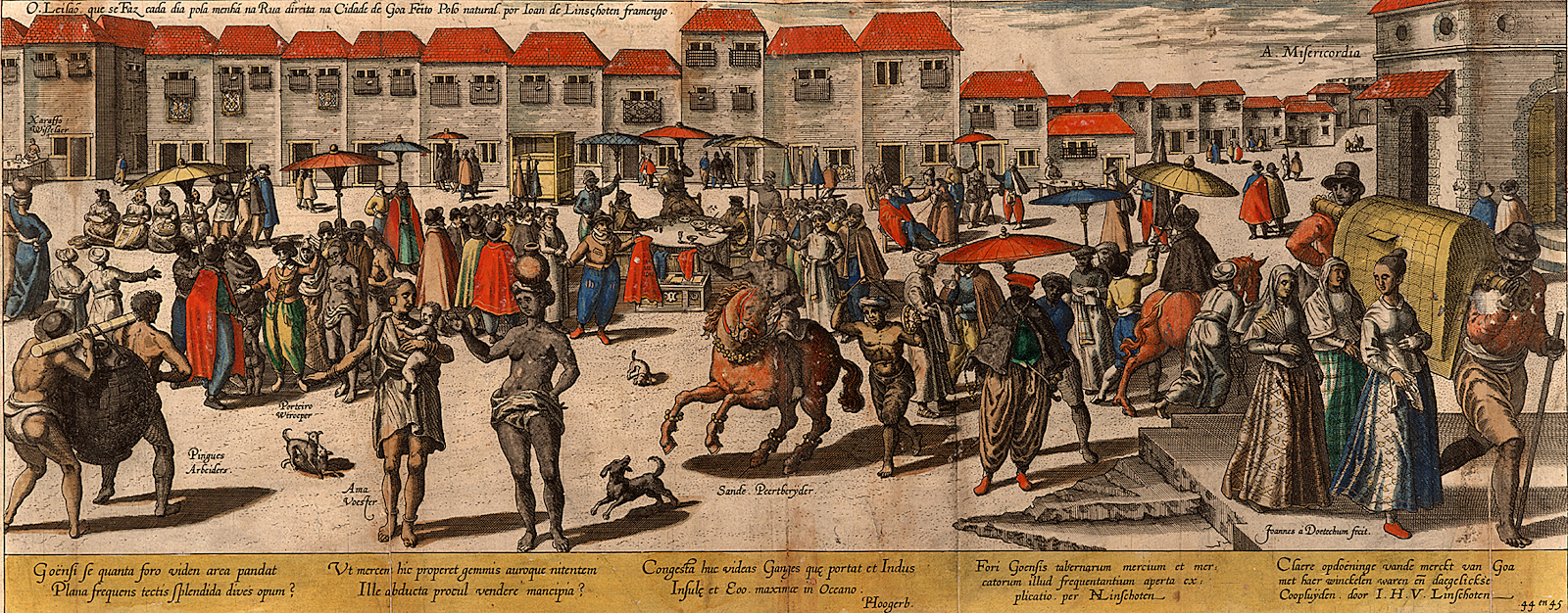
Goa Market (1599)
from: "Balcony airing racks in 16th century Goa." Cover Magazine.
"They (Goan women)... dress meat exquisitely, not to put the stomach to much trouble, but such as shall digest presently; supposed, pottages, and varieties of stews, in little China dishes or plates."
- From the travel writing of English doctor John Fryer (1650-1733)
Among such newly-invented dishes was vindaloo, a Goan adaptation of the Portuguese dish "carne de vinho e alhos" – meat cooked in wine vinegar and garlic. The Indian women commonly called it 'kari,' a native word that meant dishes of sautéed vegetables or meat.
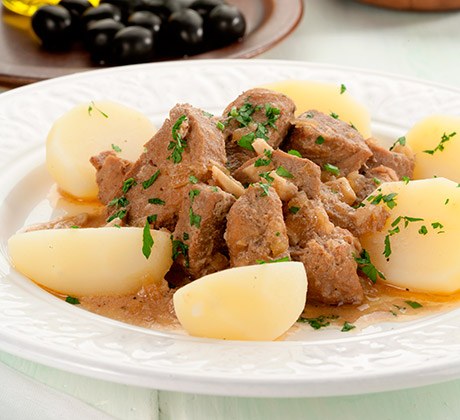
Original Portuguese Carne de Vinho e Alhos
from: "Carne em vinha-d'alhos." Cozinhar sem Stress.
"They (the Indian women in Goa) drinke not any wine, nore use any vinegar, but only water."
- From the travel writing of Dutch merchant Jan Huyghen van Linschoten (1563-1611)
"Vindaloo" or "kari" was the first curry in history. It contained the essential ingredients of today's Anglo-Indian curry and Japanese curry: a paste of Indian spices and chili pepper, fried meat, cooked rice, fried vegetables, and vinegar.
"Vindaloo or Bindaloo - A Portuguese Kárhí
The best Vindaloo is prepared in mustard-oil, or Karwá-Tel (Sarson). Beef and pork, or duck, can be made into this excellent curry. The following ingredients are employed in its preparation... garlic, ground, one tablespoon… ginger, ground, one tablespoonful; chillies, ground, two teaspoonsful; coriander-seed, one teaspoonful…. vinegar, quarter-pint."
- From The Wife’s Help to Indian Cookery written by W. H. Dawe
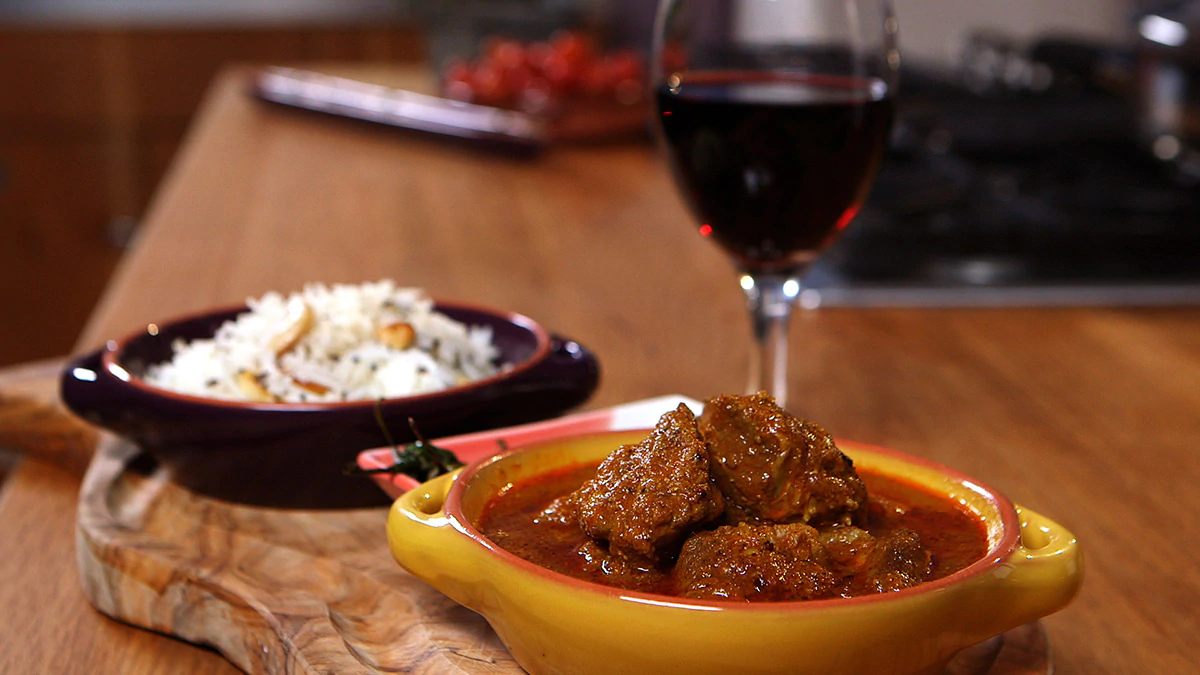
Goan Pork Vindaloo
from: Jaffrey, Madhur. "Goan pork vindaloo with potatoes." SBS.
Likewise, the first curry resulted from cooperative communication between the Portuguese husbands and the Indian wives. The Portuguese, once the invaders, brought new ingredients and recipes to the Indian kitchen. This gastronomical introduction augmented Indian women’s kitchen knowledge, which aided in the care of Portuguese immigrants.